Related Research Articles
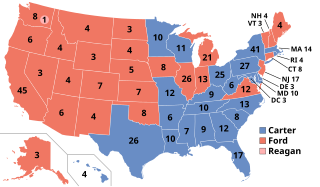
The 1976 United States presidential election was the 48th quadrennial presidential election, held on Tuesday, November 2, 1976. Democrat Jimmy Carter, former Governor of Georgia, defeated incumbent Republican president Gerald Ford in a narrow victory. This was the first presidential election since 1932 in which the incumbent was defeated, as well as the only Democratic victory of the six presidential elections between 1968 and 1988.
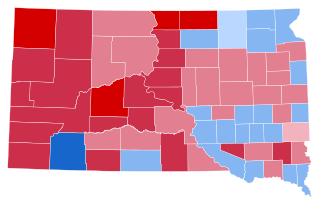
The 1972 United States presidential election in South Dakota took place on November 7, 1972, as part of the 1972 United States presidential election. Voters chose four representatives, or electors, to the Electoral College, who voted for president and vice president.

The 2016 United States presidential election was the 58th quadrennial presidential election, held on Tuesday, November 8, 2016. The Republican ticket, businessman Donald Trump and Indiana governor Mike Pence defeated the Democratic ticket of former secretary of state and First Lady of the United States Hillary Clinton and the junior senator from Virginia, Tim Kaine, in what was considered one of the biggest political upsets in American history.
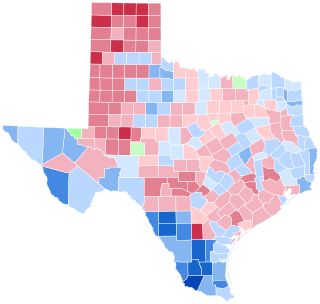
The 1992 United States presidential election in Texas took place on November 3, 1992, as part of the 1992 United States presidential election. Voters chose 32 representatives, or electors to the Electoral College, who voted for president and vice president.

The 1968 United States presidential election in New York took place on November 5, 1968. All 50 states and the District of Columbia, were part of the 1968 United States presidential election. Voters chose 43 electors to the Electoral College, which selected the president and vice president.

The 1844 United States presidential election in Tennessee took place between November 1 and December 4, 1844, as part of the 1844 United States presidential election. Voters chose 13 representatives, or electors to the Electoral College, who voted for President and Vice President.

The 1916 United States presidential election in New Jersey took place on November 7, 1916. All contemporary 48 states were part of the 1916 United States presidential election. Voters chose 14 electors to the Electoral College, which selected the president and vice president.

The 1968 United States presidential election in New Hampshire took place on November 5, 1968, as part of the 1968 United States presidential election, which was held throughout all 50 states and the District of Columbia. Voters chose four representatives, or electors to the Electoral College, who voted for president and vice president.

The 1968 United States presidential election in Maine took place on November 5, 1968, as part of the 1968 United States presidential election, which was held throughout all fifty states and D.C. Voters chose four representatives, or electors to the Electoral College, who voted for president and vice president.
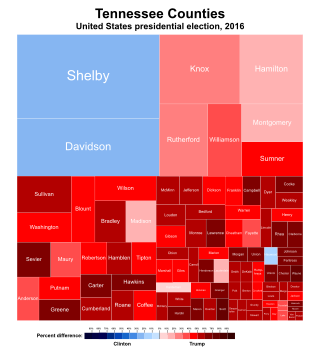
The 2016 United States presidential election in Tennessee was held on November 8, 2016, as part of the 2016 General Election in which all 50 states plus the District of Columbia participated. Tennessee voters chose electors to represent them in the Electoral College via a popular vote pitting the Republican Party's nominee, businessman Donald Trump, and running mate Indiana Governor Mike Pence against Democratic Party nominee, former Secretary of State Hillary Clinton and her running mate, Virginia Senator Tim Kaine.
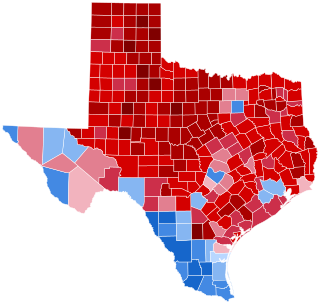
The 2016 United States presidential election in Texas took place on November 8, 2016, as part of the 2016 United States presidential election. Primary elections were held on March 1, 2016.
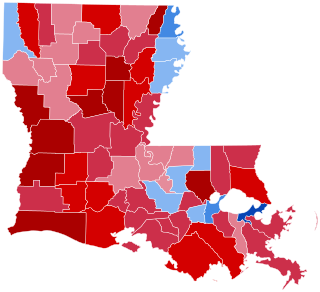
The 2016 United States presidential election in Louisiana was held on Tuesday, November 8, 2016, as part of the 2016 United States presidential election in which all 50 states plus the District of Columbia participated. Louisiana voters chose electors to represent them in the Electoral College via a popular vote, pitting the Republican Party's nominee, businessman Donald Trump, and running mate Indiana Governor Mike Pence against Democratic Party nominee, former Secretary of State Hillary Clinton, and her running mate Virginia Senator Tim Kaine. Louisiana has eight electoral votes in the Electoral College.

The 2016 United States presidential election in New York was held on Tuesday, November 8, 2016, as part of the 2016 United States presidential election in which all 50 states plus the District of Columbia participated. New York voters chose electors to represent them in the Electoral College via a popular vote, pitting the Republican Party's nominee, businessman Donald Trump, and running mate Indiana Governor Mike Pence against Democratic Party nominee, former Secretary of State Hillary Clinton, and her running mate Virginia Senator Tim Kaine. New York has 29 electoral votes in the Electoral College.

The 2016 United States presidential election in California was held on Tuesday, November 8, 2016, as part of the 2016 United States presidential election in which all 50 states plus the District of Columbia participated. California voters chose electors to represent them in the Electoral College via a popular vote, pitting the Republican Party's nominee, businessman Donald Trump, and running mate Indiana Governor Mike Pence against Democratic Party nominee, former Secretary of State Hillary Clinton, and her running mate Virginia Senator Tim Kaine. California had 55 electoral votes in the Electoral College, the most of any state.

The 1968 United States presidential election in Texas was held on November 5, 1968. All 50 states and the District of Columbia, were part of the 1968 United States presidential election. The state chose 25 electors to represent them in the Electoral College, who voted for president and vice president.
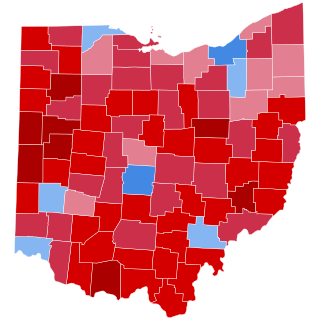
The 2020 United States presidential election in Ohio was held on Tuesday, November 3, 2020, as part of the 2020 United States presidential election in which all 50 states plus the District of Columbia participated. Ohio voters chose electors to represent them in the Electoral College via a popular vote, pitting the Republican Party's nominee—incumbent President Donald Trump and his running mate, Vice President Mike Pence—against the Democratic Party nominee, former Vice President Joe Biden and his running mate, California Senator Kamala Harris. Ohio had 18 electoral votes in the Electoral College.

The 2020 United States presidential election in Tennessee was held on Tuesday, November 3, 2020, as part of the 2020 United States presidential election in which all 50 states plus the District of Columbia participated. Tennessee voters chose electors to represent them in the Electoral College via a popular vote, pitting the Republican Party's nominee, incumbent President Donald Trump, and running mate Vice President Mike Pence against Democratic Party nominee, former Vice President Joe Biden, and his running mate California Senator Kamala Harris. Tennessee has 11 electoral votes in the Electoral College.

The 1996 presidential campaign of Bob Dole began when Republican Senator and Senate Majority Leader Bob Dole formally announced his candidacy for Republican Party nomination in 1995. After beating other candidates in the primaries, he became the Republican nominee, with his opponent being Democratic incumbent President Bill Clinton in the 1996 presidential election. Dole conceded defeat in the race in a telephone call to Clinton on November 5, 1996.
References
- ↑ Michael S. Lewis-Beck and Tom W. Rice, "Localism in Presidential Elections: The Home State Advantage", American Journal of Political Science, Vol. 27, No. 3 (Aug., 1983), pp. 548-556.
- ↑ Nixon, a lifelong Californian born in Yorba Linda in Orange County, had taken residence in New York after his failed run for the California governor's office.
- ↑ Lou Cannon. "Ronald Reagan: Campaigns and Elections". Miller Center of Public Affairs . Retrieved September 5, 2020.
- ↑ "Dave Leip's Atlas of U.S. Presidential Elections - Compare Data". uselectionatlas.org. Archived from the original on December 25, 2014. Retrieved November 6, 2014.
- ↑ Christopher J. Devine, Kyle C. Kopko, The VP Advantage (2016), p. 5-6.